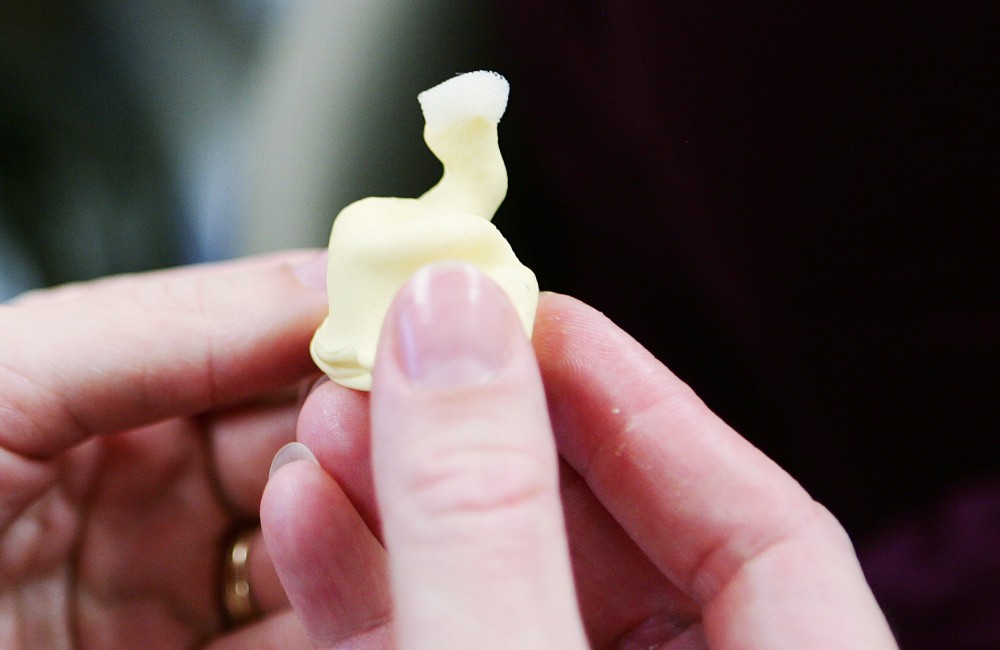On the University of MinnesotaâÄôs campus, it seems more the rule than the exception to see students taking aural mini-vacations as they walk between classes with headphones in their ears. However, students may unknowingly be putting themselves at risk for hearing problems down the road. A recent European Union committee quantified that risk, which could be mitigated by an alternative headphone offered by the UniversityâÄôs Speech- Language-Hearing Sciences department , which can help students turn down the volume. The EU Scientific Committee on Emerging and Newly Identified Health Risks found that between 5 and 10 percent of EU citizens are at risk for developing permanent hearing loss after five or more years of personal music player use. That percentage refers to people who listen to music through headphones at a high volume setting âÄî at least 89 decibels âÄî for an hour per day. Sarah Angerman, SHLS assistant clinical specialist , said though the study doesnâÄôt necessarily tell her anything new, it is supportive of what audiologists have been seeing clinically. Background noise is one reason people crank the volume beyond safe levels, she said, and the SLHS clinic offers one solution. Ear Mold Lab Custom ear mold headphones, which help block external noise, have gained popularity in the past two years, Mark De Ruiter, SLHS clinical program director , said. The SLHS department offers them to students for $80 a pair, Angerman said. As Angerman demonstrated the ear-mold-making process Tuesday on audiology graduate student Molly Bergsbaken , she first placed a foam block into BergsbakenâÄôs ear, then mixed two substances to make the impression material, filled a syringe with that mixture and injected it into her ear. A chemical reaction between the substances causes it to harden after about five minutes, permanently documenting the characteristic curves of BergsbakenâÄôs ear. The mold can then be used to make custom headphones, hearing aids or earplugs. Though the SLHS department hasnâÄôt had much demand for custom headphones, they do get a lot of other ear-mold-related business, from places like the University marching band, which the clinic outfits with custom earplugs. First-year civil engineering student Paul Anderson said outside noise does factor into the volume he sets his personal music player at, and if thereâÄôs too much external noise, he wonâÄôt listen to music. He might consider getting noise-reducing headphones in the future, he said. Of course, for their hearing health to benefit, students need to take advantage of outside noise reduction by turning down the volume, Angerman said. She added people should never use headphones specifically to drown out other loud noises, like mowing the lawn. Noise induced hearing loss depends on both volume and exposure time, as indicated by the 60-60 rule, which suggests people listen to music less than 60 minutes per day at 60 percent of the volume scale, Angerman said. Though headphone use doesnâÄôt top the list of causes of noise induced hearing loss, De Ruiter said addressing the issue is high on the clinicâÄôs priority list, especially with younger listeners, because itâÄôs so prevalent. Listeners might not be aware of hearing loss until permanent damage has already occurred, because it happens gradually and high-pitched hearing is affected first. High-pitched sounds only carry about 5 percent of the power of most everyday speech. Hearing loss occurs because hair cells inside the ear are damaged by high-intensity sound signals. Those hairs donâÄôt grow back, so damage is cumulative.
U offers ear-mold headphones to reduce outside noise

Image by Paul Bangasser
Noise induced hearing loss can be caused by extended periods of loud noises. The custom molds can be used to block out background noise and allow the user to turn down the volume of the music in their headphones.
Published October 22, 2008










